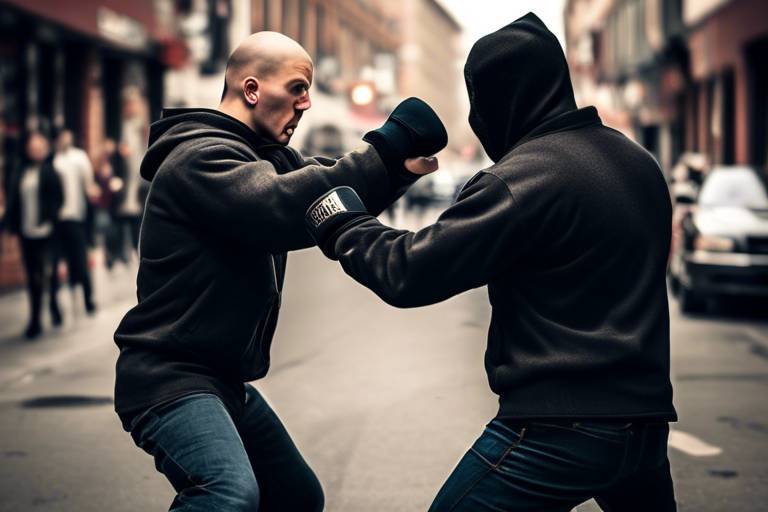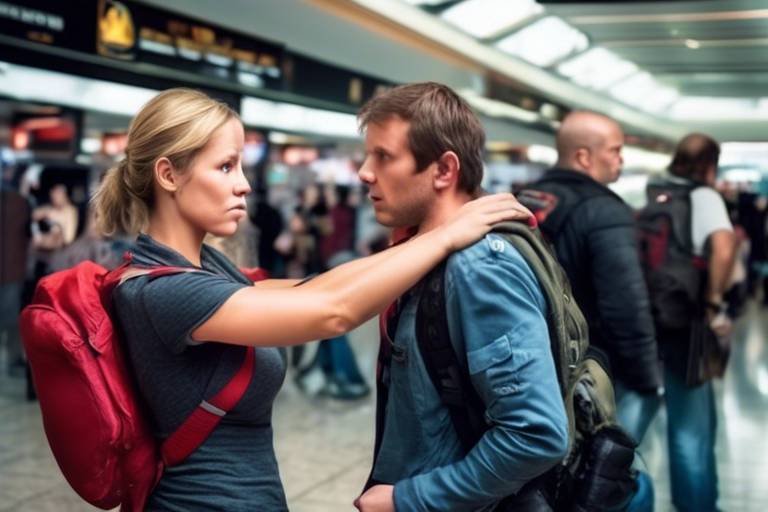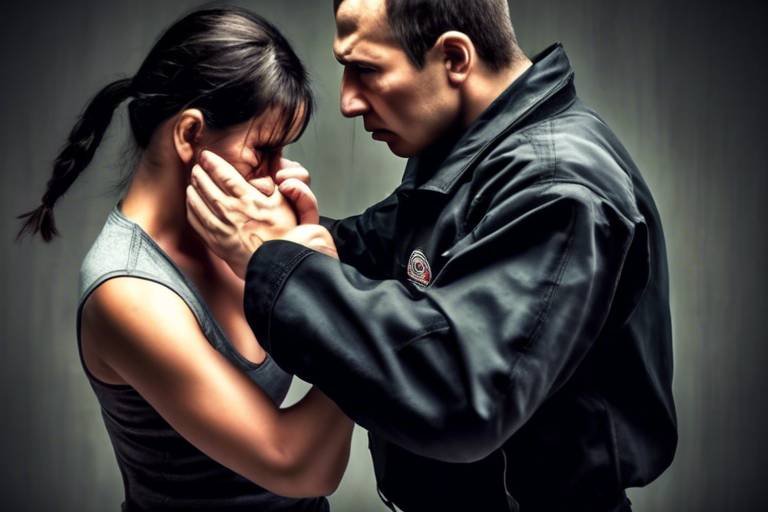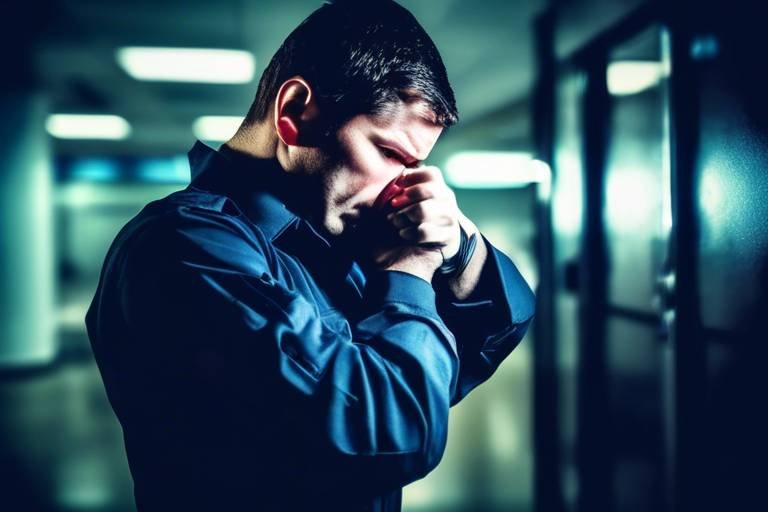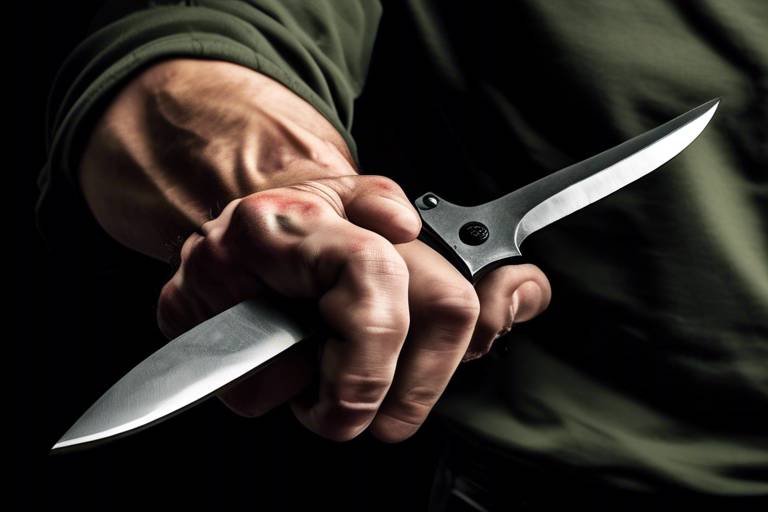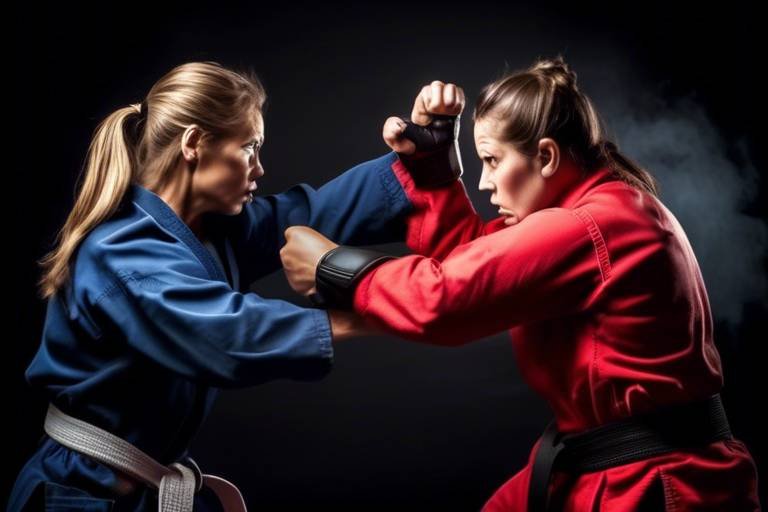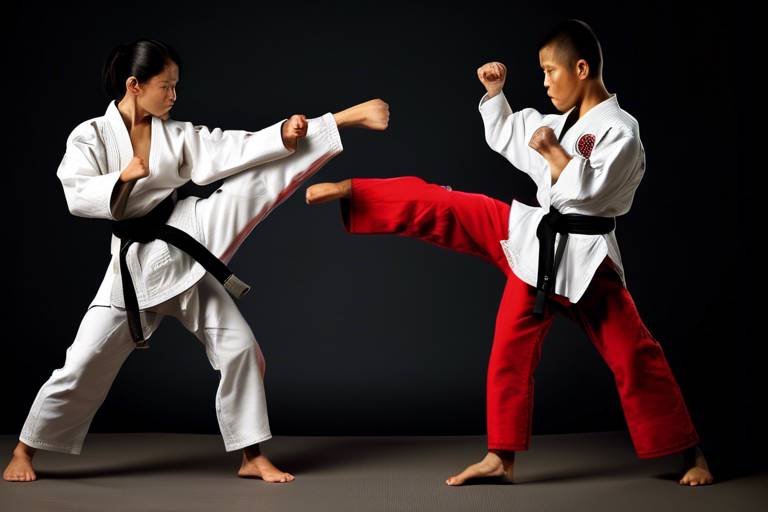Stay Secure in Crowded Places with These Self-Defense Techniques
In today's world, crowded places can sometimes feel like a minefield of potential dangers lurking just around the corner. Whether you're navigating through a bustling market, attending a concert, or simply commuting on public transport, the reality is that personal safety often takes a backseat to convenience. But fear not! This article explores effective self-defense techniques designed to empower you, helping you feel safer and more confident in any crowded environment. By integrating awareness, preparedness, and practical self-defense moves into your daily life, you can transform from a passive bystander into an active participant in your own safety.
Personal safety is not just a buzzword; it's a critical aspect of our daily lives, especially in crowded places. Imagine walking through a crowded street, feeling a bit uneasy as strangers brush past you. This feeling is not uncommon, and it underscores the importance of being aware of your surroundings and prepared for any situation. It’s like having a sixth sense—one that can alert you to potential dangers before they escalate. By understanding the dynamics of personal safety, you can develop a mindset that prioritizes vigilance and readiness, ensuring that you’re not just another face in the crowd but someone who is aware and prepared.
Situational awareness is your ability to perceive what’s happening around you. It’s about tuning in to the world instead of getting lost in your phone or daydreams. Think of it as being the main character in a movie; you need to be aware of the plot twists and turns that might come your way. Techniques for enhancing your awareness include scanning your environment regularly and identifying exits or safe zones. When you’re in a crowded area, take a moment to observe the people around you. Are they acting unusually? Is there a group that seems overly aggressive? By honing your situational awareness, you can spot potential threats before they escalate into dangerous situations.
Recognizing signs of danger is essential for maintaining your safety. In crowded environments, potential threats can manifest in various ways. For instance, if you notice someone who seems overly fixated on a particular person or group, that could be a red flag. Other common indicators include:
- Unusual body language, such as clenched fists or aggressive postures.
- Groups of people who appear to be targeting someone.
- Someone who is moving against the flow of the crowd, creating a sense of unease.
Understanding these signs can help you respond accordingly, whether that means moving to a different area or alerting authorities if necessary. Your safety is paramount, and being able to identify these potential threats can make all the difference.
Body language can often speak louder than words. Understanding the non-verbal cues of those around you can provide valuable insights into their intentions. For example, if someone is fidgeting nervously or avoiding eye contact, it may indicate discomfort or agitation. On the other hand, a person standing too close or invading your personal space could be a potential threat. By learning to read these signals, you can better navigate social interactions and protect yourself from possible aggression.
Your environment plays a significant role in your safety. Being aware of your surroundings means more than just noticing who is nearby; it involves assessing the area for potential risks. Are there any escape routes? Is the lighting adequate? Are there security personnel present? By conducting a quick mental assessment of your environment, you can identify safe and unsafe areas, making informed decisions about where to go and how to act.
Your instincts are powerful allies when it comes to personal safety. Have you ever had that gut feeling that something just wasn’t right? It’s essential to trust those feelings and act on them. If you sense danger, whether it’s a crowded subway car that feels too tense or a stranger who seems overly interested in you, don’t hesitate to remove yourself from the situation. Your intuition is often your first line of defense, and listening to it can help you avoid potentially dangerous encounters.
Now that we've established the importance of awareness and preparedness, let’s dive into some practical self-defense techniques that anyone can learn. These techniques are designed to be simple yet effective, empowering you to protect yourself in urgent situations. Remember, the goal is not to engage in a fight but to create an opportunity to escape safely.
Learning basic defensive moves can be a game-changer. Techniques like palm strikes, elbow jabs, and knee strikes are straightforward but can be incredibly effective in disarming an aggressor. The beauty of these moves lies in their simplicity—no martial arts experience is required! With a little practice, you can feel confident executing these techniques if the need arises.
Everyday items can serve as improvised self-defense tools. Think about the things you carry with you daily: a pen, keys, or even a water bottle can be used to defend yourself. For example, a pen can be a powerful tool for jabbing, while keys can be gripped between your fingers to create a makeshift weapon. The key is to be creative and resourceful, ensuring that you're always prepared, no matter where you are.
Q: What should I do if I feel threatened in a crowded place?
A: If you feel threatened, trust your instincts and try to remove yourself from the situation. Look for security personnel or a safe place to go.
Q: Are there self-defense classes available for beginners?
A: Yes! Many community centers and gyms offer self-defense classes tailored for beginners. It’s a great way to learn techniques and gain confidence.
Q: Can everyday objects really be used for self-defense?
A: Absolutely! Items like pens, keys, and even umbrellas can be effective in a pinch. The key is to understand how to use them to your advantage.
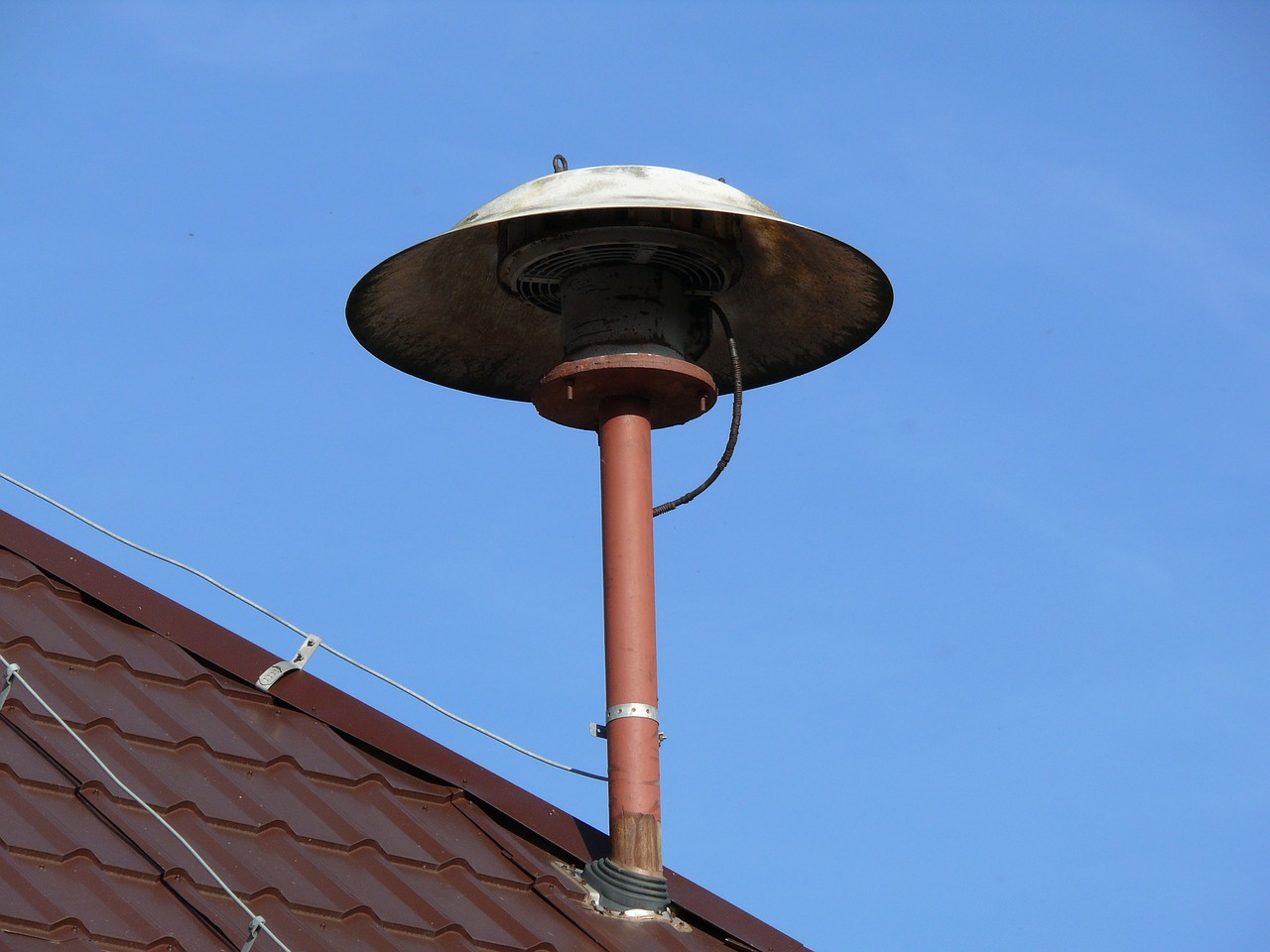
Understanding Personal Safety
This article explores effective self-defense techniques that can help individuals feel safer in crowded environments. Learn practical tips and strategies to enhance personal security and confidence in various situations.
Personal safety is not just a buzzword; it’s a vital aspect of our daily lives, especially when we find ourselves in crowded places. Think about it: when you're surrounded by a sea of people, the chances of encountering a potentially dangerous situation can increase. Therefore, being aware of your surroundings and being prepared is essential for navigating these environments effectively. Personal safety involves not only physical self-defense techniques but also a mindset that prioritizes awareness and readiness. It’s about staying alert and knowing how to respond to situations before they escalate.
Imagine walking through a bustling market or a packed subway station. The energy is palpable, and while it can be exhilarating, it can also be overwhelming. In such scenarios, understanding your personal safety means recognizing that not everyone around you has good intentions. This awareness can mean the difference between a minor inconvenience and a dangerous encounter. It’s crucial to develop a heightened sense of awareness so you can spot potential threats early. By doing so, you can take proactive measures to protect yourself and those around you.
To effectively enhance your personal safety, consider these key elements:
- Awareness: Always be conscious of what’s happening around you. Take note of people’s behaviors and the overall atmosphere.
- Preparation: Equip yourself with knowledge and skills. This might involve learning self-defense techniques or understanding how to react in emergencies.
- Confidence: Carry yourself with confidence. Often, a confident demeanor can deter potential threats.
Developing a personal safety mindset is akin to building a muscle; the more you practice, the stronger you become. By integrating awareness and preparedness into your daily routine, you can significantly reduce your vulnerability in crowded spaces. Remember, personal safety is not about living in fear; it’s about empowering yourself to navigate the world confidently and securely.
Situational awareness involves being conscious of your surroundings. Here, we delve into techniques for enhancing your awareness to spot potential threats before they escalate.
Recognizing signs of danger is essential. This subheading highlights common indicators of potential threats in crowded environments and how to respond accordingly.
Understanding body language can provide insights into others' intentions. This section covers key cues to look for that may signal danger or aggression.
Being aware of your environment can help you identify safe and unsafe areas. This part discusses how to assess your surroundings for potential risks.
Your instincts can be powerful allies. This subheading emphasizes the importance of listening to your gut feelings and acting on them to avoid danger.
This section outlines practical self-defense techniques that can be used effectively in crowded areas, focusing on simple moves anyone can learn.
Learning basic defensive moves can empower you. Here, we explore fundamental techniques that can help you protect yourself in urgent situations.
Everyday items can serve as improvised self-defense tools. This subheading discusses how to utilize common objects for protection in crowded places.
Q: What should I do if I feel threatened in a crowded place?
A: Trust your instincts. If you feel unsafe, try to move to a more populated area or seek help from authorities or security personnel.
Q: Can I really defend myself with everyday objects?
A: Absolutely! Many common items, such as keys, pens, or even a bag, can be used effectively for self-defense if you know how to use them.
Q: How can I improve my situational awareness?
A: Practice being present in the moment. Regularly observe your surroundings, and make a habit of noticing details about people and environments.

Situational Awareness
In a world that often feels chaotic, especially in crowded places, becomes your best friend. Think of it as your personal radar system, constantly scanning the environment for anything that feels off. When you’re surrounded by a sea of people, it’s easy to get lost in the crowd, but staying alert can make all the difference. Imagine walking through a busy market; the sights, sounds, and smells can be overwhelming. Yet, amidst this sensory overload, your ability to remain aware of what's happening around you is crucial for your safety.
Being aware doesn’t mean you have to be paranoid; rather, it’s about developing a keen sense of observation. By training your mind to notice the small details, you can spot potential threats before they escalate. For instance, if you see someone acting unusually—perhaps they’re pacing back and forth or frequently glancing around—it may be time to reassess your surroundings. This heightened awareness can help you avoid dangerous situations altogether.
To enhance your situational awareness, consider these techniques:
- Scan Your Surroundings: Regularly look around and take mental notes of exits, potential hazards, and the people nearby.
- Trust Your Gut: If something feels off, it probably is. Don’t hesitate to remove yourself from the situation.
- Limit Distractions: While it’s tempting to scroll through your phone, keep your head up and stay engaged with your environment.
Furthermore, it’s essential to understand that your awareness is not just about what’s happening in front of you. Environmental awareness plays a vital role too. For example, if you’re in a crowded subway station, knowing where the exits are can be a lifesaver. Are there security personnel nearby? Are there any areas that feel less safe? By assessing your environment, you can make informed decisions quickly.
To illustrate this, let’s consider a simple scenario:
| Situation | Awareness Response |
|---|---|
| Walking through a busy street | Notice the people around you; identify who seems out of place. |
| Standing in line at a concert | Look for exits and security personnel; keep an eye on the crowd dynamics. |
| Shopping in a crowded mall | Be aware of your belongings; watch for anyone who seems overly interested in you. |
By incorporating these practices into your daily life, you can significantly enhance your situational awareness and, ultimately, your personal safety. Remember, the goal is not to live in fear but to empower yourself with the knowledge and skills to navigate crowded environments confidently.
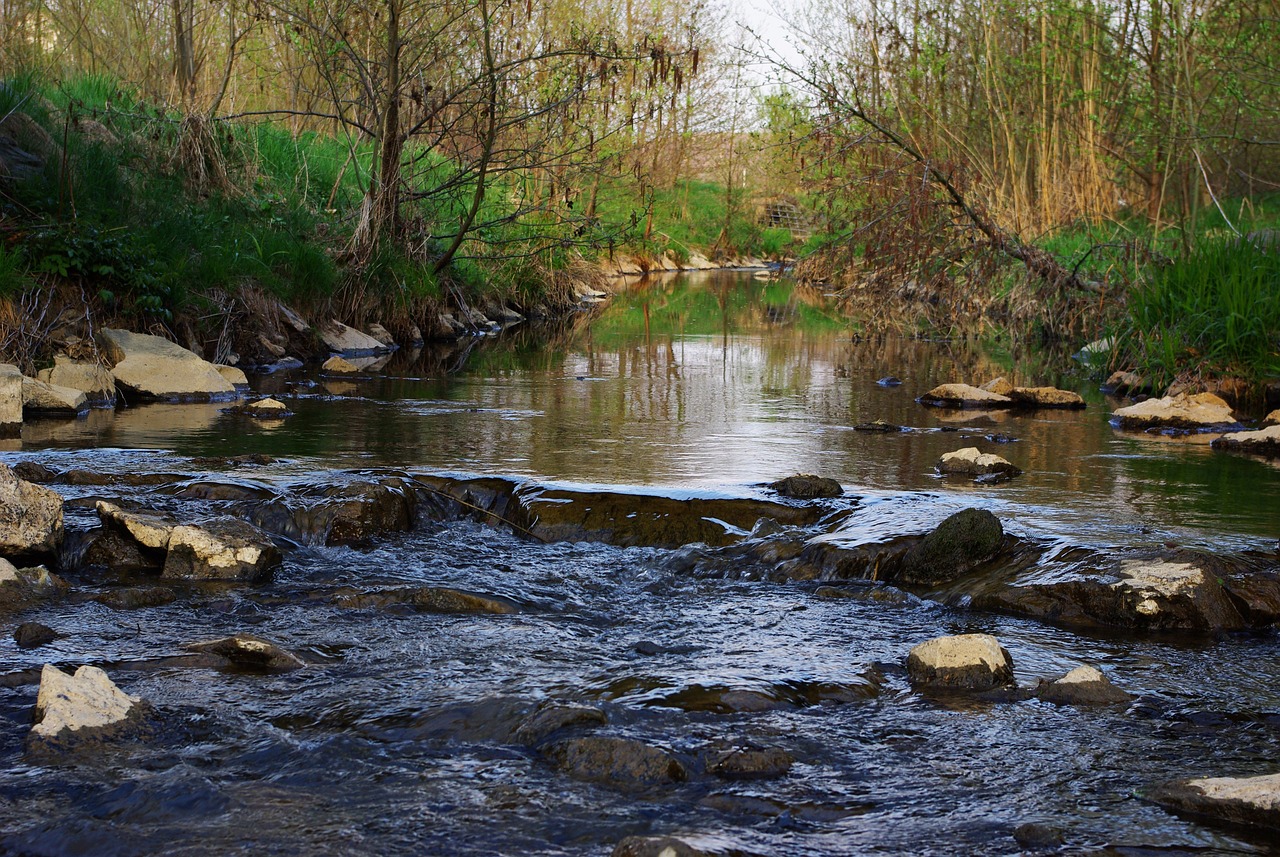
Identifying Potential Threats
In the bustling chaos of crowded places, it can sometimes feel like danger is lurking around every corner. But fear not! By honing your ability to identify potential threats, you can navigate these situations with confidence and poise. The key is to remain vigilant and aware of your surroundings. Start by observing the people around you. Are they behaving unusually? For instance, someone who is overly agitated or seems to be watching others too closely may raise a red flag. Trust your gut—if something feels off, it probably is.
Another crucial aspect of identifying threats is recognizing environmental cues. Pay attention to the layout of the area. Are there exits nearby? Is the lighting dim, making it easier for someone to hide? These factors can significantly influence your safety. When you’re aware of your surroundings, you can make informed decisions about where to position yourself. For example, standing near an exit can provide a quick escape route if needed.
Let's delve deeper into some common indicators that may signal potential threats:
- Unusual behavior: Look for individuals who are acting out of the ordinary. This includes excessive fidgeting, shouting, or aggressive posturing.
- Group dynamics: Be cautious of groups that seem to be targeting individuals, especially if they are isolating someone or engaging in hostile conversations.
- Personal space invasion: If someone is invading your personal space without a clear reason, it could be a sign of aggression or intent to cause harm.
Remember, identifying potential threats is not about living in fear but rather about empowering yourself with knowledge. The more you practice being aware, the easier it will become to spot red flags. It’s like developing a sixth sense; with time, you’ll be able to read the room and assess situations quickly.
In conclusion, being proactive in identifying potential threats can be your first line of defense in crowded environments. By staying alert and trusting your instincts, you can significantly enhance your personal safety. So the next time you find yourself in a crowded area, take a moment to scan your surroundings and assess the dynamics at play. Your awareness could make all the difference.
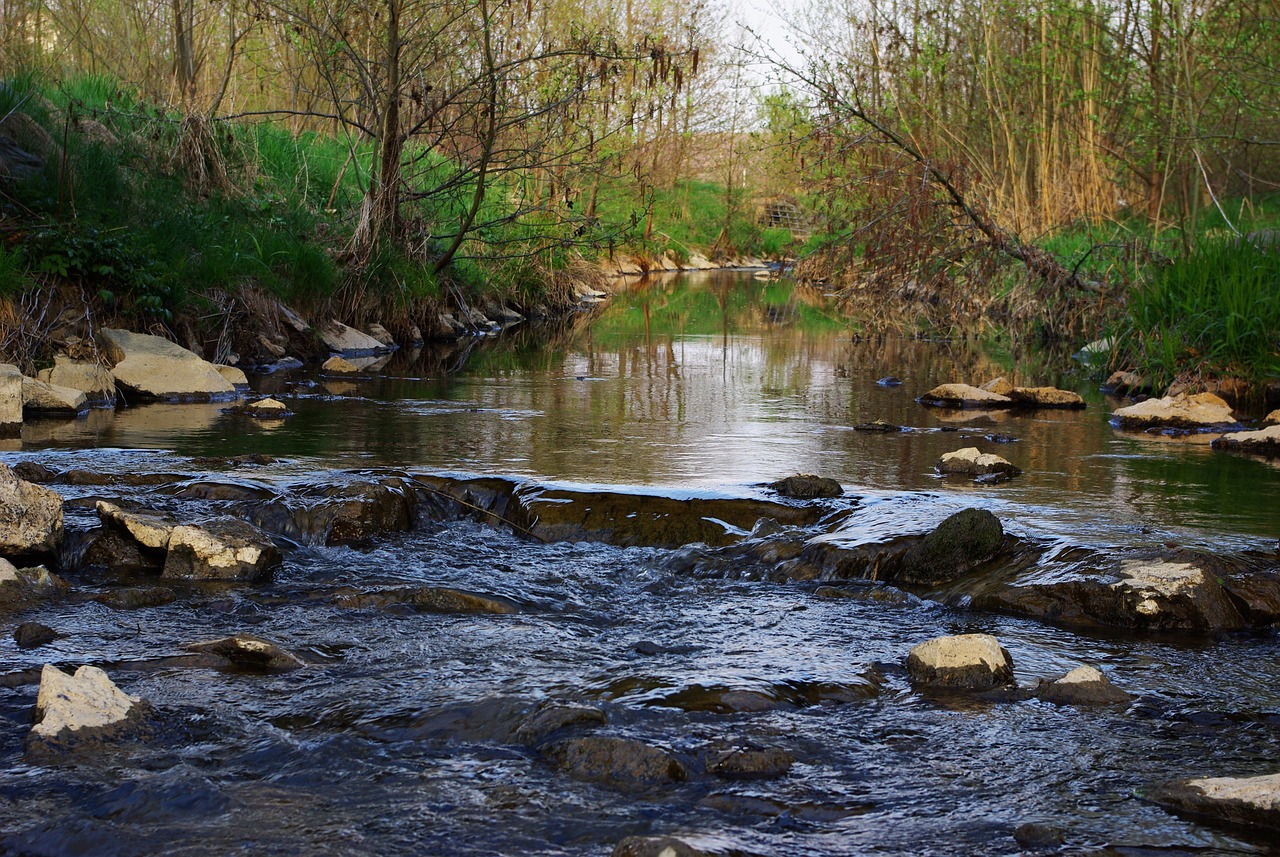
Reading Body Language
Understanding body language is like having a secret decoder ring for human emotions and intentions. In crowded places, where words are often drowned out by noise and chaos, being able to read non-verbal cues can be your first line of defense. Think of body language as the silent language that speaks volumes about how someone feels. For instance, if you notice someone standing too close for comfort, with tense shoulders and crossed arms, it might be time to reassess your surroundings. These subtle cues can indicate discomfort or even aggression.
One key aspect of reading body language is to look for clusters of signals. A single gesture might not mean much, but when combined with others, it can tell a compelling story. For example, if someone is avoiding eye contact, fidgeting with their hands, and has a closed-off posture, these signals together suggest that they may be feeling anxious or hostile. On the other hand, open gestures, relaxed posture, and direct eye contact typically indicate friendliness and approachability. Being able to differentiate between these cues can help you gauge the safety of your environment.
It’s also essential to pay attention to the context. The same gesture can have different meanings depending on the situation. For instance, someone crossing their arms might simply be cold, or they could be defensive. So, always consider the surrounding environment and the individual’s behavior over time. If you notice someone consistently exhibiting signs of agitation, such as tapping their foot or glancing around nervously, it might be wise to keep your distance.
To help you navigate this complex world of body language, here are some common signals to watch for:
- Closed Posture: Arms crossed or body turned away can indicate discomfort or defensiveness.
- Fidgeting: Excessive movement can suggest anxiety or impatience.
- Direct Eye Contact: This often shows confidence and openness.
- Avoiding Eye Contact: This may signal deceit, discomfort, or anxiety.
- Mirroring: When someone mimics your body language, it usually indicates rapport and agreement.
By honing your skills in reading body language, you can become more attuned to the feelings and intentions of those around you. This awareness not only enhances your personal safety but also empowers you to navigate social interactions with greater confidence. Remember, the more you practice observing these signals, the better you'll become at interpreting the silent messages that people convey.
Q: How can I improve my ability to read body language?
A: Practice observing people in various settings. Take note of their gestures and expressions, and try to interpret their feelings based on the context.
Q: Are there cultural differences in body language?
A: Yes, body language can vary significantly across cultures. What may be considered a friendly gesture in one culture could be offensive in another, so it’s important to be aware of these differences.
Q: Can body language be misleading?
A: Absolutely! Body language should be interpreted in context. A person may exhibit nervous behavior for reasons unrelated to aggression, such as being shy or uncomfortable in a new environment.

Environmental Awareness
Being aware of your surroundings is like having a sixth sense; it’s about tuning into the world around you and recognizing what feels right or wrong. Imagine walking through a bustling market or a crowded subway station. The sights and sounds can be overwhelming, but within that chaos lies a wealth of information that can keep you safe. Environmental awareness means understanding the dynamics of the space you are in, identifying safe zones, and recognizing potential hazards. It’s not just about being alert; it’s about being proactive.
To enhance your environmental awareness, consider these key aspects:
- Familiarize Yourself with the Area: If you find yourself in a new location, take a moment to observe the layout. Are there exits nearby? Where are the security personnel? Knowing the geography of your surroundings can help you make quick decisions in a pinch.
- Observe the Crowd: Crowds can be unpredictable. Watch for unusual behavior—people who seem overly agitated or are acting out of character can be red flags. Trust your gut; if something feels off, it probably is.
- Identify Safe Spaces: Look for places where you can retreat if necessary. These could be shops, restaurants, or areas where there are groups of people. Being aware of your escape routes can significantly enhance your sense of security.
Moreover, it’s essential to understand the context of your environment. For example, a festival or concert might have a different atmosphere compared to a busy train station. Each setting comes with its own set of challenges and risks. By adapting your awareness to the specific environment, you can better prepare yourself for any situation that might arise.
In crowded places, distractions abound—people talking, music playing, and the hustle and bustle of daily life can easily draw your attention away from potential threats. Therefore, it’s crucial to practice mindfulness. This means being present and fully engaged with your environment. Try to minimize distractions, such as your phone, and instead, focus on your surroundings. This simple shift in mindset can make a significant difference in your ability to respond to threats.
Lastly, remember that environmental awareness is not just about avoiding danger; it’s also about enhancing your overall experience in public spaces. When you are aware of your surroundings, you can enjoy the moment more fully without the nagging worry of what might happen next. So, the next time you find yourself in a crowded area, take a deep breath, scan your environment, and trust that you have the tools to navigate it safely.
Q: How can I improve my environmental awareness?
A: Start by regularly practicing mindfulness in your daily life. Pay attention to your surroundings, observe people’s behaviors, and familiarize yourself with new places. The more you practice, the more instinctive it will become.
Q: What should I do if I feel unsafe in a crowded place?
A: If you feel uneasy, trust your instincts. Look for a safe space, such as a store or a group of people. If necessary, don’t hesitate to contact security or law enforcement for assistance.
Q: Are there specific signs I should look for in a crowded environment?
A: Yes, watch for individuals who seem overly anxious, are acting aggressively, or are making others uncomfortable. These can be indicators of potential trouble.
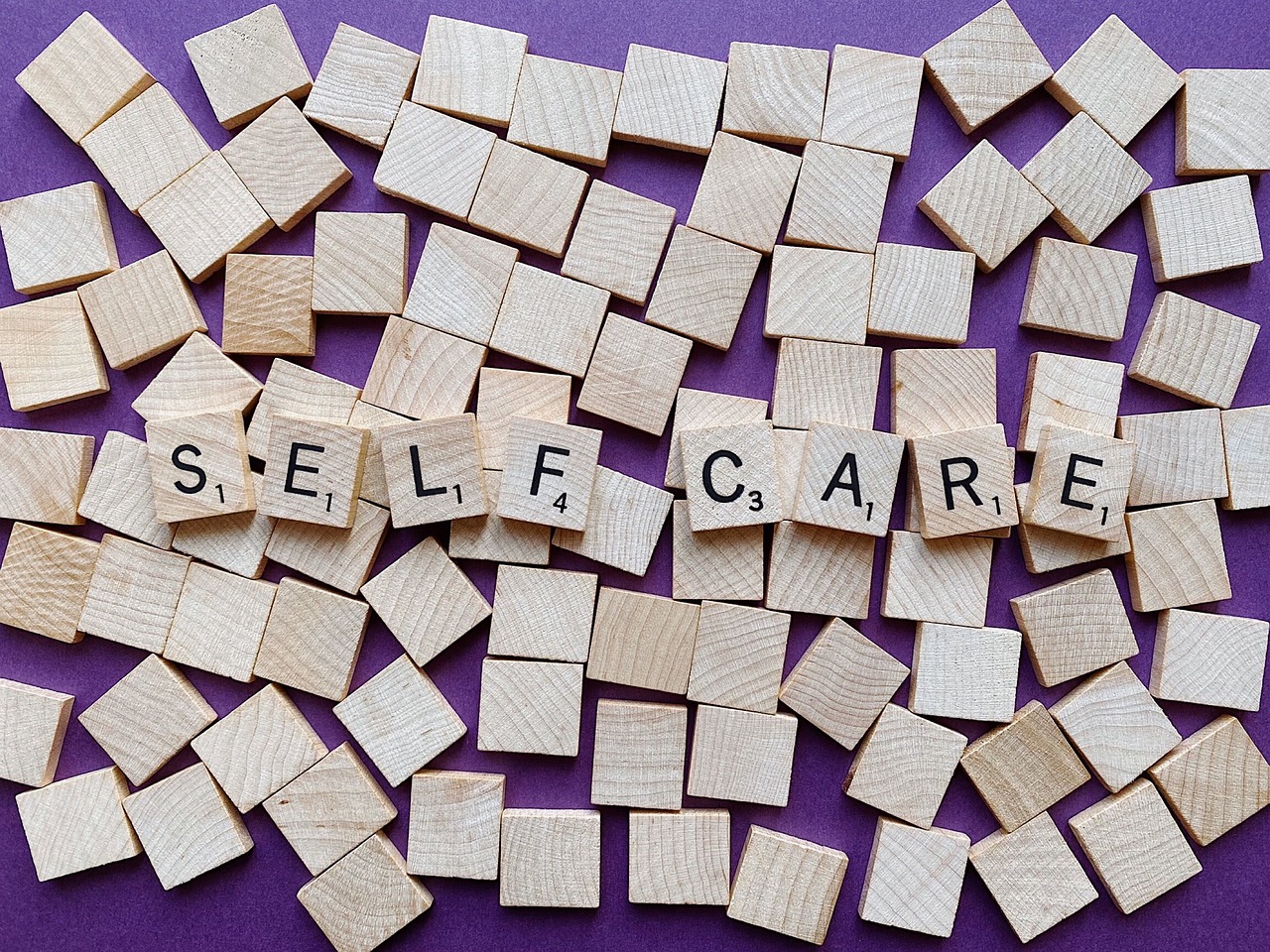
Trusting Your Instincts
Have you ever found yourself in a situation where something just didn't feel right? Maybe you were in a crowded subway, and the hair on the back of your neck stood up. That’s your instinct kicking in, and it’s a powerful tool that everyone possesses. Trusting your instincts can often be the difference between safety and danger. Our instincts are like an internal alarm system, honed over thousands of years of evolution, designed to alert us to potential threats. So, why ignore them?
Listening to your gut feelings is crucial, especially in crowded environments where the dynamics can change in an instant. When you're surrounded by people, it's easy to get lost in the noise and chaos. However, taking a moment to tune into your instincts can help you identify when something feels 'off.' For instance, if you notice someone acting suspiciously—perhaps they are lingering too long in one spot or watching others too intently—your instincts may be signaling that you should be cautious. It’s essential to acknowledge these feelings and respond appropriately.
Sometimes, our instincts can manifest as a nagging feeling or even a sense of unease. This is your body’s way of communicating with you. It’s like having a sixth sense that can help you navigate through life’s uncertainties. But how do you differentiate between a legitimate instinct and mere anxiety? Here are a few pointers:
- Body Signals: Pay attention to how your body reacts. Do you feel tense, sweaty, or anxious? These physical signs can indicate that something isn't right.
- Context Matters: Consider the situation. Is it a familiar place, or is it somewhere new? Unfamiliar environments can heighten your instincts.
- Listen and Act: If your instincts are telling you to leave or to seek safety, take action. It’s better to be safe than sorry.
Moreover, trusting your instincts doesn’t mean you have to live in fear or paranoia. It’s about being aware and prepared. For instance, if you’re walking in a crowded area and you feel uncomfortable, don't hesitate to change your route or find a group of people to walk with. It’s all about creating a buffer zone that can enhance your sense of security.
Lastly, remember that your instincts can be sharpened over time. The more you practice being aware of your surroundings and listening to your gut feelings, the better you will become at recognizing when something isn't right. Think of it as a muscle that needs to be exercised. So, the next time you find yourself in a crowded place, take a moment to check in with yourself. Your instincts are there to protect you—don’t ignore them!
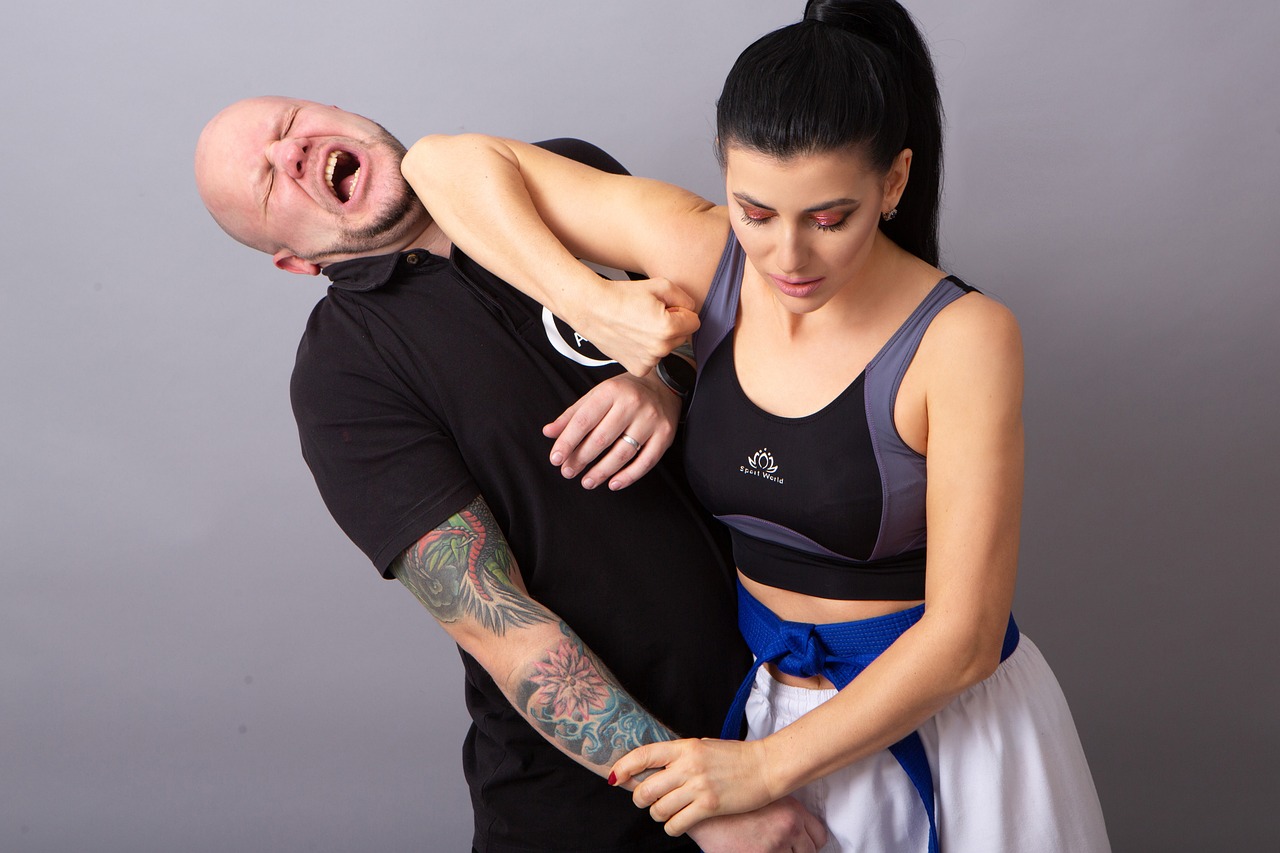
Self-Defense Techniques
When it comes to personal safety, knowing a few can be a game-changer, especially in crowded places where the atmosphere can quickly become unpredictable. Imagine walking through a bustling market or a packed concert; it’s easy to feel lost in the crowd, but with the right skills, you can navigate these situations with confidence. Self-defense isn’t just about physical strength; it’s about being smart, aware, and prepared. In this section, we’ll explore practical techniques that anyone can learn, regardless of their fitness level or experience.
First, let’s dive into some basic defensive moves. These are simple yet effective techniques that can help you protect yourself in urgent situations. For example, a straightforward move like a palm strike can be incredibly effective. By using the base of your palm to strike an assailant's nose or chin, you can create enough space to escape. Another effective technique is the knee strike; raising your knee into an attacker’s groin can incapacitate them momentarily, giving you the chance to flee. Remember, the goal of self-defense is not to engage but to create an opportunity to get away safely.
In addition to these basic moves, it’s essential to think about your surroundings and how you can use everyday objects as improvised self-defense tools. You’d be surprised at how many items can be utilized for protection. For instance, a pen can be a powerful weapon when thrust into an attacker’s sensitive areas. Similarly, a bag can be swung to create distance or even block incoming blows. Here’s a quick table summarizing some common items you can use for self-defense:
| Item | Usage |
|---|---|
| Keys | Hold between fingers for striking |
| Purse/Bag | Swing to create distance |
| Umbrella | Block or jab |
| Water Bottle | Throw to distract or strike |
Moreover, it’s crucial to practice these techniques regularly. Just like any skill, the more you practice, the more instinctive these moves will become. Consider enrolling in a self-defense class; many community centers offer classes that focus on practical techniques tailored for real-life situations. These classes not only teach you how to defend yourself but also boost your confidence and awareness, making you feel more secure in your day-to-day life.
Lastly, remember that the essence of self-defense is about prevention. Always be aware of your surroundings and trust your instincts. If something feels off, it probably is. By being proactive and prepared, you can significantly reduce your risk of encountering dangerous situations. Self-defense is not just a set of moves; it’s a mindset that empowers you to take control of your safety.

Basic Defensive Moves
When it comes to personal safety, knowing some can make a world of difference, especially in crowded environments where threats can emerge unexpectedly. Imagine walking through a bustling market or a packed subway station; the energy is high, and while most people are just going about their day, it's crucial to be prepared for anything. Basic self-defense techniques are not just about physical strength; they are about being smart, aware, and ready to act when necessary.
One of the first moves to learn is the palm strike. This technique is simple yet effective. Instead of using a fist, which can lead to injury, a palm strike allows you to hit with the heel of your hand. Aim for sensitive areas like the nose or chin. The beauty of this move is that it can be executed quickly and with minimal effort. Additionally, it can create enough distance between you and an aggressor, giving you a chance to escape. Remember, the goal is to get away safely, not to engage in a prolonged fight.
Another essential move is the elbow strike. This technique is particularly useful in close quarters, where space is limited. Your elbows are powerful and can deliver significant force. To execute an elbow strike, bring your elbow up sharply and aim for the attacker's face or torso. This move can catch an assailant off guard and create an opening for you to flee. It's all about using your body effectively, leveraging your strengths to defend yourself.
In addition to these strikes, it's important to know how to break free from holds. If someone grabs your wrist or arm, a simple technique can help you escape. Instead of pulling away, which often tightens their grip, rotate your wrist towards their thumb, as this is the weakest point of their hold. This move can free you from their grasp and allow you to make your escape. Remember, staying calm and focused is key; panic can lead to mistakes.
Lastly, don't underestimate the power of verbal self-defense. Sometimes, a loud, assertive shout can deter an attacker. Yelling phrases like "Back off!" or "Leave me alone!" can attract attention and scare off someone who may have had ill intentions. In crowded places, people are often more willing to help than you might think. So, don’t hesitate to use your voice as a tool for self-defense.
To summarize, here are some basic defensive moves you can practice:
- Palm Strike - A quick and effective way to hit an attacker.
- Elbow Strike - Perfect for close encounters.
- Breaking Free from Holds - Use wrist rotation to escape grips.
- Verbal Self-Defense - Use your voice to deter potential threats.
Practicing these techniques regularly can help build your confidence and prepare you for unexpected situations. Remember, the best defense is often to avoid confrontation altogether, but having these skills in your back pocket can provide peace of mind in crowded places.
1. Do I need to be physically strong to defend myself?
No, self-defense is more about technique and awareness than physical strength. Many effective moves rely on speed and strategy rather than brute force.
2. How can I practice these moves safely?
Consider taking a self-defense class where you can learn techniques under the guidance of a trained instructor. Practicing with a partner can also help you refine your skills.
3. What should I do if I feel threatened in a crowded place?
Stay calm, trust your instincts, and look for a way to remove yourself from the situation. Use the self-defense techniques you’ve learned if necessary, and don’t hesitate to call for help.
4. Are there any self-defense tools I should carry?
While it’s beneficial to carry self-defense tools like pepper spray or a personal alarm, the most important thing is to be aware of your surroundings and know how to react in various situations.

Using Everyday Objects
In crowded places, you might feel vulnerable, but the good news is that you can turn ordinary items into powerful self-defense tools. Imagine walking through a bustling market or a packed subway, and suddenly, you feel uneasy. Instead of panicking, you can reach for something as simple as a pen or a set of keys to protect yourself. Everyday objects can be surprisingly effective when it comes to self-defense. They are not just tools for daily tasks; they can also serve as your first line of defense in an unexpected situation.
Let’s break down some common items you can utilize:
- Pens and Pencils: A pen can be more than just a writing instrument. If you find yourself in a threatening situation, you can use a pen as a stabbing weapon. Aim for soft spots like the eyes or throat to maximize its effectiveness. Just hold it firmly and be ready to strike!
- Keys: Your keys can be your best friend in a crisis. Instead of holding them in your fist, try extending them between your fingers. This way, if you need to jab or scratch, you can do so with more impact. Just remember to aim for vulnerable areas.
- Umbrellas: An umbrella is not just for rain; it can be a versatile self-defense tool. You can use it to create distance between you and an aggressor, or even as a shield. Plus, it gives you an added advantage of surprise. Who expects an umbrella to be used in self-defense?
- Handbags or Backpacks: Your bag can serve as a protective barrier. If you feel threatened, swinging your bag can create space and distract the attacker. A well-placed hit can give you the crucial seconds you need to escape.
It's essential to remember that the key to using these objects effectively is practice. Just like any skill, the more you practice, the more instinctive your reactions will become. Try incorporating these techniques into your daily routine. For example, when you’re out and about, think about how you would use your belongings if the need arose. This mental preparation can make a world of difference when faced with a real threat.
Lastly, don’t underestimate the power of your voice. Yelling or making a scene can deter an attacker and draw attention from bystanders. Sometimes, the most effective self-defense technique is simply making noise. So, whether you're using a pen, your keys, or your voice, remember that confidence is your best ally. Stand tall, be aware, and don’t hesitate to act if you sense danger.
Q: Can I really defend myself with everyday objects?
A: Absolutely! Everyday items can be effective tools for self-defense if used correctly. Items like pens, keys, and even umbrellas can provide a surprising advantage in a threatening situation.
Q: What should I do if I feel threatened in a crowded area?
A: Trust your instincts. If you feel uncomfortable, try to move to a more populated area, use your phone to call for help, or use everyday objects as a form of defense.
Q: Is it legal to use everyday objects for self-defense?
A: Generally, using everyday objects for self-defense is legal as long as you are acting in self-defense and the force used is proportional to the threat faced. It's always best to check your local laws regarding self-defense.
Frequently Asked Questions
- What is the importance of situational awareness in crowded places?
Situational awareness is crucial because it helps you stay alert to your surroundings. By being aware, you can spot potential threats before they escalate, allowing you to react quickly and effectively. Think of it like being a radar; the more you scan your environment, the better prepared you are to handle any surprises that may come your way.
- How can I identify potential threats in a crowded environment?
Identifying potential threats involves recognizing certain behaviors and body language that may indicate danger. Look for signs of aggression, such as someone invading your personal space or displaying erratic movements. Trust your instincts; if something feels off, it probably is. Just like a sixth sense, your gut feelings can guide you toward safety.
- What are some basic self-defense techniques I can learn?
Basic self-defense techniques include simple moves like blocking, striking, and escaping holds. These moves are designed to be easy to remember and can be effective even for beginners. Think of them as your personal safety toolkit; the more tools you have, the better equipped you are to handle any situation that arises.
- Can everyday objects be used for self-defense?
Absolutely! Everyday objects like keys, pens, or even a water bottle can be used as improvised self-defense tools. For instance, holding your keys between your fingers can create a makeshift weapon if you need to defend yourself. It's all about being resourceful and thinking on your feet when faced with an unexpected threat.
- How can I trust my instincts when it comes to personal safety?
Trusting your instincts involves tuning in to your gut feelings and being aware of your emotional responses to situations. If something feels wrong, don’t hesitate to remove yourself from the situation. Just like a fire alarm alerts you to danger, your instincts serve as a warning system to keep you safe.


